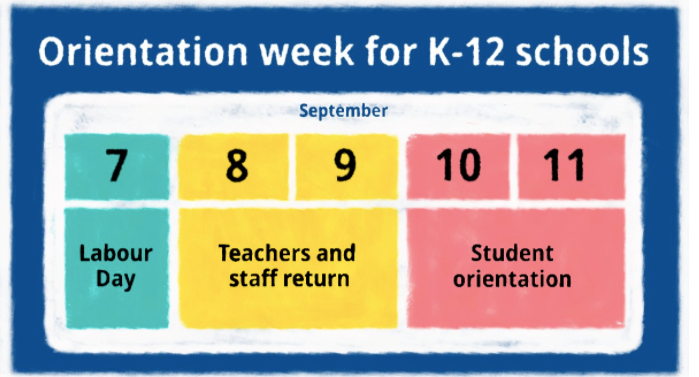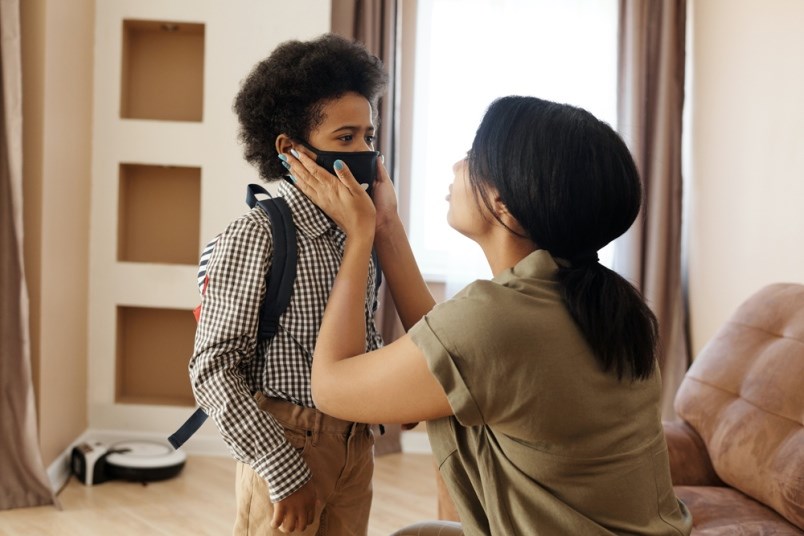Reading, writing and arithmetic will still be the focus of schools during the COVID-19 pandemic.
Report cards, regular attendance and even parent-teacher conferences will also be part of the 2020-21 school year.
But there will still be opportunities for fun activities in small learning groups and outdoors, B.C.’s back to school plan suggests.
Recess is the highlight of the day for many youngsters, and these important breaks will still happen for children who will be able to play together if they are in the same learning group.
While still controversial, learning groups of 60 for elementary and middle schools and 120 for secondary schools are seen as the best way to provide a near-to-normal school experience for children as the coronavirus still circulates in the province.
With relatively low incidence of the virus in the province and evidence that children do not appear to be the primary spreaders of COVID-19, the province has established the week of Sept. 8-11 as back-to-school for B.C., including 32,000 students in School District 43.
Parents will be key to the smooth introduction of school because they will be responsible for ensuring their children are healthy before sending them to school. They must do a daily screening that requires them to assess if their child has symptoms of a respiratory disease.
If symptoms of sickness appear, the child must stay home from school.

BACK TO SCHOOL ORIENTATION
Here’s what we know about school in September:
• SD43 staff will return to school starting Sept. 8 to adjust to their new routines, make plans for learning groups, review health and safety protocols and confirm lesson plans.
• Students will return to school Sept. 10, 11 (check with your school) for orientation which will include getting their assigned class or classes, find out who is in their learning group, practice new routines including how to safely move in and around the school.
• At the elementary and middle school level, there will be classroom groupings, where up two grades or classes are aligned, with classrooms close to each other. Students and staff who are in the same learning group will be allowed to share the same space for recess, lunch and outdoor learning activities.
• Secondary school students will continue to be organized in courses. School timetables will be organized to limit students to learning groups of no more than 120 students and staff.
• Schools will analyze student enrolment and course selection to identify "natural learning groups," students who are taking the same core subjects and electives.
• Secondary schools will be able to re-organize learning groups after each quarter or semester, according to B.C.’s back to school plan..
WHAT LEARNING GROUPS WILL LOOK LIKE
For example, a learning group could be made up of:
• A single class of students (20-30)
• Multiple classes that sometimes join together for activities like physical education (PE) or music
• A group of secondary school students with the same courses in the same quarter or semester
Learning groups can also include staff, such as teachers, specialist support staff and education assistants.
Here’s what plan says about extra curricular activities:
• Sports and special interest clubs can occur if physical distance can be maintained by members of different learning groups or reduced physical contact is practiced by those within the same learning group.
• Assemblies, concerts and gatherings are limited to small gatherings within a learning group. Larger events, such as assemblies with a guest speaker, would happen virtually.
There won’t be any tournaments, competitions or festivals.
As for work placements and apprenticeships, for which students garner volunteer hours or course credit, they may continue. However, if they can’t be done in person, alternatives should be sought and students are encouraged to talk to their teachers about these arrangements.
Expect a focus on hygiene and cleanliness in schools and a requirement to keep children home if they are ill.
IF SOMEONE GETS SICK
Here’s what happens if a student or staff member gets sick at school:
If a student or staff member develops symptoms at school, they may be given a non-medical mask and will be separated from their classmates or colleagues. Then:
• The individual’s parent or guardian will be contacted to discuss next steps.
• Custodial staff will clean and disinfect the areas the person used.
• Schools will immediately inform public health of a potential case.
Public health will then:
• Reach out and identify any potential cases.
• Get in touch with close contacts.
• Recommend 14-day isolation if necessary.
• Provide follow-up recommendations if necessary.
• Schools will provide learning support to students required to self-isolate.
• Together, schools and public health officials will determine if suspending in-class learning is necessary.
Parents or guardians will be notified if their child has been in contact with a COVID-positive person. If that happens, the child will be required to self-isolate.



